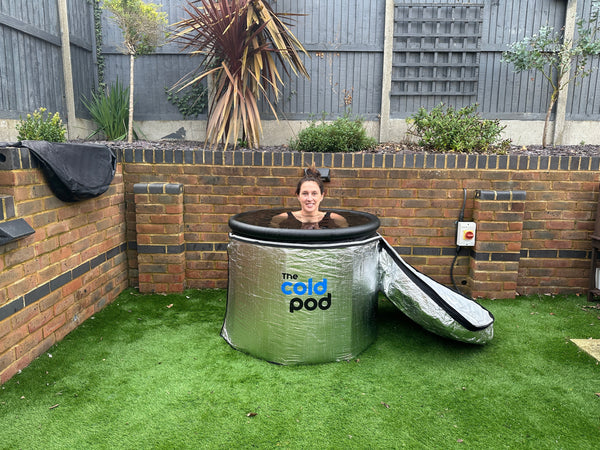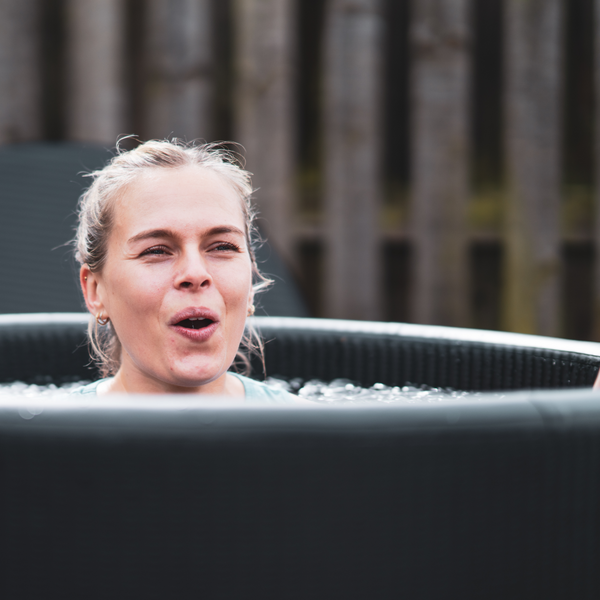Ice therapy, also known as cold water immersion, ice baths, or cold-water therapy, is a widely used technique for providing relief from pain, reducing inflammation, and promoting the healing process. This form of therapy has become increasingly popular among athletes and fitness enthusiasts, as it helps to manage injuries, alleviate post-workout soreness, and support overall recovery.
The principle behind ice therapy is based on the physiological effects of cold temperatures on the body. When exposed to cold, blood vessels constrict, reducing blood flow and minimising inflammation in the affected area. Once the cold is removed, blood flow increases, promoting the delivery of essential nutrients and oxygen to the tissues, facilitating healing and recovery.
However, it’s essential to be aware of the potential risks and side effects associated with ice therapy, such as frostbite or nerve damage if not performed correctly. By understanding the proper techniques and precautions, you can harness the benefits of ice therapy while minimising the risks, ensuring an effective and safe recovery tool in your fitness routine.
Proper Techniques for Cold Water Ice Therapy
In order to effectively partake in ice therapy, both the duration and frequency of the treatment must be taken into account. It is typically advised to apply cold temperatures for 10 to 20 minutes at a time; with at least 45-minute intervals between applications. People tend to use ice baths, cold water immersion techniques, and ice packs to apply the cold temperatures. If you consider using cold therapy, it is important to take precautions; such as covering your skin with a barrier and keeping an eye out for any signs of discomfort or adverse reaction.
Recovery Techniques Following Cold Water Bathing
- Gradual rewarming: After completing a cold-water immersion session, it is essential to rewarm the body gradually. Rapid rewarming can lead to additional discomfort and negate the benefits of the therapy. Be sure to wear warm, dry clothing post-dip and consider applying heat packs or using a heating pad (with a barrier to protect the skin). Taking a warm shower or bath is also a great way to rewarm your body, starting with lukewarm water and gradually increasing the temperature.
- Gentle stretching and mobility exercises: Stretching and mobility exercises can help to promote blood flow and alleviate any stiffness after ice therapy. You could consider performing ankle circles; gentle hamstring stretches and shoulder rolls. It is important to listen to your body and avoid any movements that cause pain or discomfort.
- Hydration and nutrition: These two factors play a vital role in the recovery process of cold-water bathing. Drinking water post-treatment can help to flush toxins out of the body whilst supporting your overall health. Consuming a balanced meal containing proteins, carbohydrates, and healthy fats can also aid in muscle repair and growth.
- Compression garments: After ice therapy, wearing compression clothing can assist in minimising swelling and improving blood flow. Socks, sleeves, and tights are just a few examples of compression clothing. Make sure to pick garments that are snug but do not impede your movement or cause discomfort.
Monitoring Your Recovery Progress
To ensure you obtain the best results from your ice therapy sessions, it is essential to keep a close eye on your recovery progress. Carefully monitor your pain and inflammation levels and make a note of any improvements or setbacks you experience. Maintaining a recovery journal can be particularly beneficial, as it enables you to identify patterns and adjust your recovery plan accordingly. Remember, patience is key; allow your body the time it needs to recuperate properly.
Furthermore, it’s important to pay attention to your body’s signals, such as changes in pain, stiffness, or swelling. If you notice any unusual symptoms or persistent discomfort, it may be necessary to consult a medical professional or adjust your recovery techniques.
Another crucial aspect of monitoring your recovery progress is assessing your overall well-being, including sleep quality, energy levels, and mood. These factors can significantly impact your recovery process and should not be overlooked. By taking a comprehensive approach to monitoring your progress and addressing any areas of concern, you can optimise your recovery and ensure you’re making the most of your ice therapy sessions.
Seeking Professional Guidance
If you’re uncertain about the most suitable recovery techniques for your specific needs, or if you’re not experiencing the anticipated results from cold water therapy, it may be beneficial to consult a qualified professional. Physical therapists, sports physicians, and other healthcare practitioners can provide invaluable guidance, helping to tailor your recovery plan to your unique requirements and goals.
These experts can assess your individual circumstances, taking into account factors such as your fitness level, medical history, and the nature of your injury or discomfort. They can recommend appropriate adjustments to your cold water therapy routine, suggest complementary therapies, and provide guidance on best practices for injury prevention.
Moreover, professional guidance can be particularly important for those with pre-existing medical conditions, as certain therapies may be contraindicated or require modification to ensure safety and efficacy. By seeking expert advice, you can optimise your recovery strategy and ensure that you’re on the right path towards improved well-being and peak performance.
Reaching out to a suitable healthcare professional can significantly enhance your ice therapy experience, offering personalised support and advice to help you maximise the benefits of this proven recovery technique.
Conclusion
In summary, recovering effectively after ice baths is crucial for maximising its benefits and supporting your body’s healing process. By gradually rewarming; incorporating gentle stretching and mobility exercises; maintaining proper hydration and nutrition, and wearing compression garments, you can enhance your recovery and overall well-being. Monitoring your progress and seeking professional guidance when needed will help to ensure that your recovery plan is tailored to your specific needs and goals.
Remember to listen to your body, adapt your recovery plan as needed, and invest in a well-rounded recovery strategy for optimal results.







